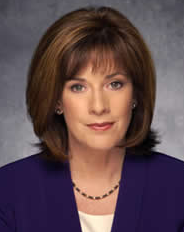 BY DIANE DIMOND
BY DIANE DIMOND
Ahh. The extra sunshine these days makes me long for spring. Thanks to daylight saving time, nearly all of us are now able to enjoy an extra hour of sun on the back end of the day. The only U.S. residents who don’t benefit live in Hawaii, most of Arizona (excluding the Navajo reservation) and about a half-dozen U.S. territories that stay on standard time.
But not everyone is as happy as I am with the extra sunlight.
Albert Hussman wrote to say: “I would like to see you report on something that almost all Americans would like to see abolished … daylight saving time. It’s so foolish to have this annoying and unnecessary thing pop up twice every year.”
Turns out a majority of Americans agree with Hussman. A Rassmussen Reports poll a couple years ago found only 35 percent of us like springing forward and falling back during this biannual ritual.
The extra daylight in the evening comes, of course, at the expense of a delayed sunrise. The prolonged darkness can be hazardous for those who need to be at school or work early. History shows us that messing with the clocks results in negative impacts on both economic and health issues. During daylight saving time, or DST, the U.S. sees an uptick in traffic accidents, workplace injuries and heart attacks. And there’s no improvement in energy consumption or consumer spending, as they pretty much cancel each other out in spring and winter.
So, why do we do practice daylight saving time? While the idea of adjusting clocks first went into effect 100 years ago, during World War I, and came and went during wartimes, we practice DST today because of The 1966 Uniform Time Act. It mandates the time change but allows states to opt out.
Since 1966, several state lawmakers have tried to defy the act. New Mexico Sen. Cliff Pirtle has long wanted to opt out of daylight saving time. For economic reasons, he’d like to see the feds approve a plan that would scoot the Land of Enchantment over into the Central time zone.
“Since so much of our state’s economy is based on oil and gas and banking, the closer we are in time with our neighbors in the east the better,” Pirtle told the Santa Fe New Mexican. “And the closer to New York, with the stock exchange working there from (9:30) to 4, I think will make our economy better off.” Other New Mexico lawmakers have not embraced Pirtle’s ideas.
In Florida it’s a different story. Earlier this month, the state legislature agreed to stay on daylight saving time all year. If both the governor and the U.S. Congress agree, that would mean an extra hour of sunny beach time during the peak tourist season of March through November.
More tourists means more tourist dollars. But the change would also mean that during the winter months, the sun wouldn’t rise until 8:00 a.m. in Miami and 8:30 a.m. in Tallahassee. Imagine what that would do to parents struggling to get their young kids out the door in the dark each morning. Schools could be ordered to start later, but would employers agree to allow workers with kids to come in late?
See the dilemma? What you give to the end of the day is, naturally, taken away from the beginning of the day. As Hussman wrote to me: “It inconveniences everybody. There are only so many daylight hours in a day. You gain nothing …” by tinkering around with time.
A few years ago, Texas seemed poised to adopt the idea of ignoring DST and staying on standard time year-round. But when it became clear that its revered Dallas Cowboys Sunday road games with East Coast rivals would start at 11 a.m. during church services, Lone Star lawmakers chose God over a time change.
A commission in Massachusetts had recommended that the state, and possibly all of New England, permanently turn clocks ahead one hour and do away with the rigmarole of switching back and forth. Then, it realized that having Boston and New York City — two locations with a ton of interconnected economic interests — on different time zones wasn’t such a great idea.
Then there is my husband’s idea to do away with daylight saving time altogether and abolish our current four time zones in favor of just two. By merging the current Eastern and Central zones, and the Mountain and Pacific zones, he believes, it would just be a matter of everyone getting used to the new system.
In the final analysis, I must admit that Hussman is correct. We may think we gain something with that extra hour of sunshine from March to November, but let’s embrace the lessons learned. If you mess with Mother Nature, there are sure to be unintended consequences. Let’s scrap the whole idea of tinkering with time, shall we?
Rockland resident Diane Dimond is a syndicated columnist, author, regular guest on TV news programs, and correspondent for Newsweek/Daily Beast. Visit her at www.DianeDimond.net or reach her via email Diane@DianeDimond.net

You must be logged in to post a comment Login